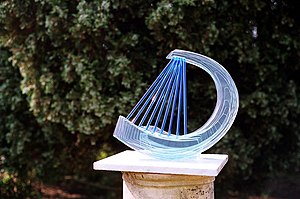I believe that everyone wants to express some inner mood or feeling through a visual language that others can understand. Rembrandt, aside from all his other incredible work, expressed his inner exploration through self portraits. Dozens of these works span his lifetime, giving expression to a visual language that speaks about each separate period in his life. Other artists froze moments in humanity creating not just a picture of a time but a feeling. Still others stripped the image bare and gave us pure emotion, movement, texture or color and let us decide what we are seeing. Sculptors have presented us with ideals of the human form. Others have created assemblages that move us to examine our own beliefs. Others create environments where we can let our own ideas run amuck. So I guess where I’m going with this very scaled down anthology of the history of art is that ART BEGINS EVERYWHERE.
And visual thinking is at the core of it all. I know some people will jump up and ask about all those other senses. But think about it. In fact let’s take the time to explore a simple idea that will become one of the most complicated examples I can present.
In your mind picture a house. Did you picture a suburban ranch with three bedrooms, an apartment in a crowded city, a hut in an open landscape or the mansion of your dreams. Was the feeling happy, sad, disgust, envy or maybe even a sense of longing? Take the time and listen to the sounds around your imagined house. Be aware of what’s going on around the house. Can you smell cooking or a new mowed lawn or the accumulation of garbage along the side of the house? When we perceive an object, in this case a house, we are conscious of it through all our senses but we know it through a variety of cues and associations related to our visual language. The more developed the language the deeper the meaning of the object. If we picture garbage we can smell it, if we see an empty room we sense its lack of life.
It is in our ability to go beyond our growth in this visual awareness past the limits of our sensory impressions and definitions that will allow us to know where art begins.
I will continue this exploration in future installments





